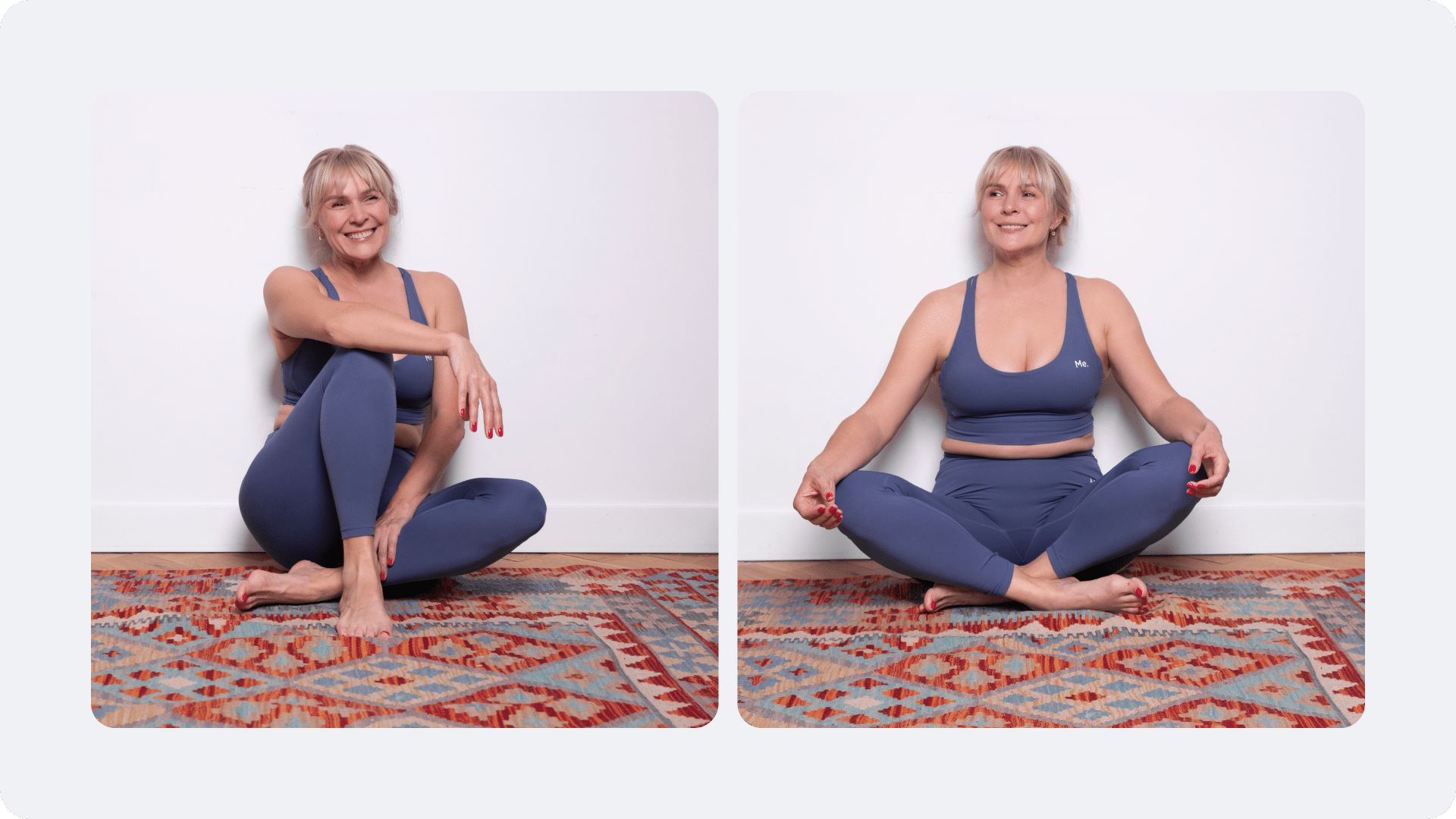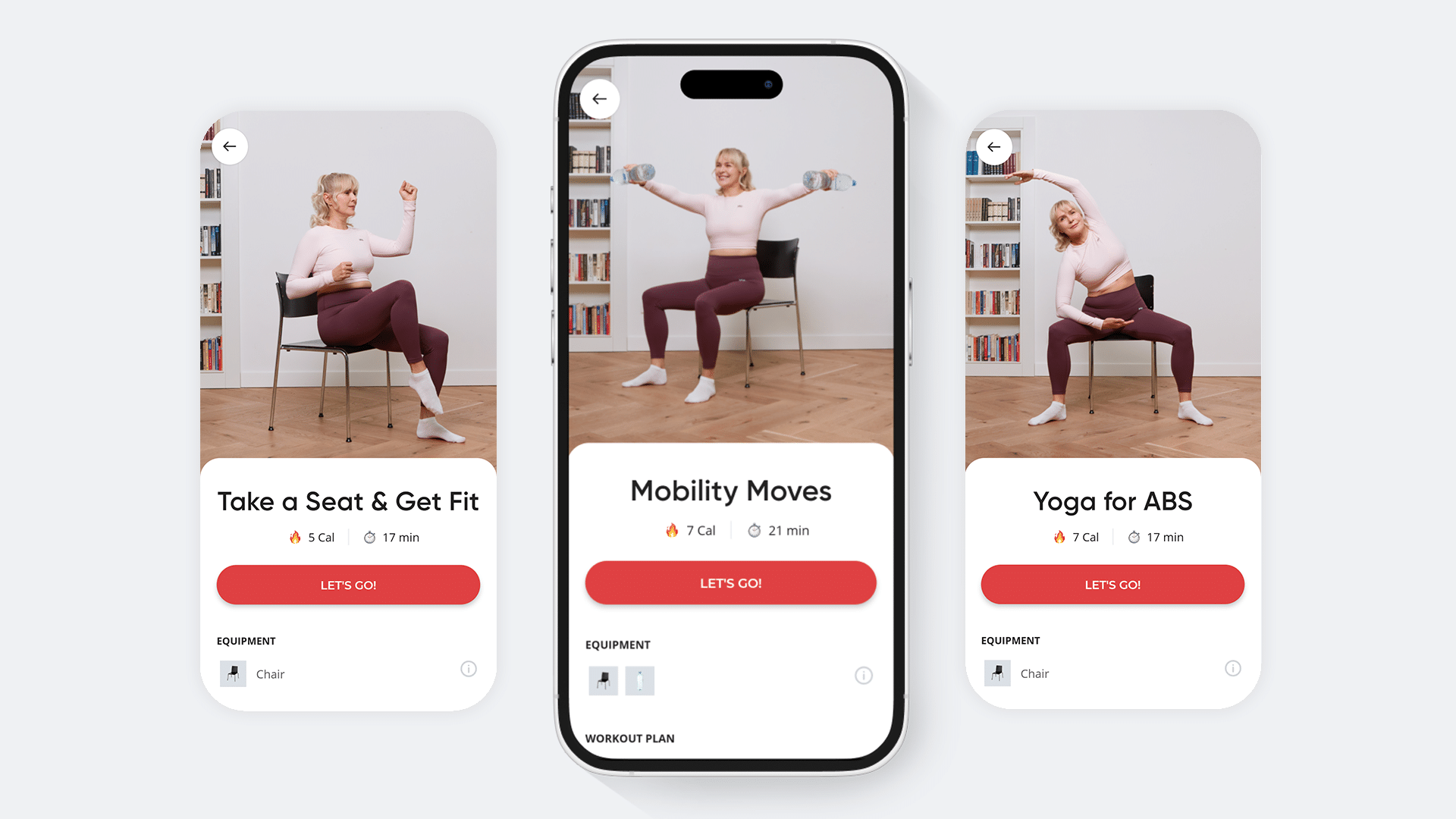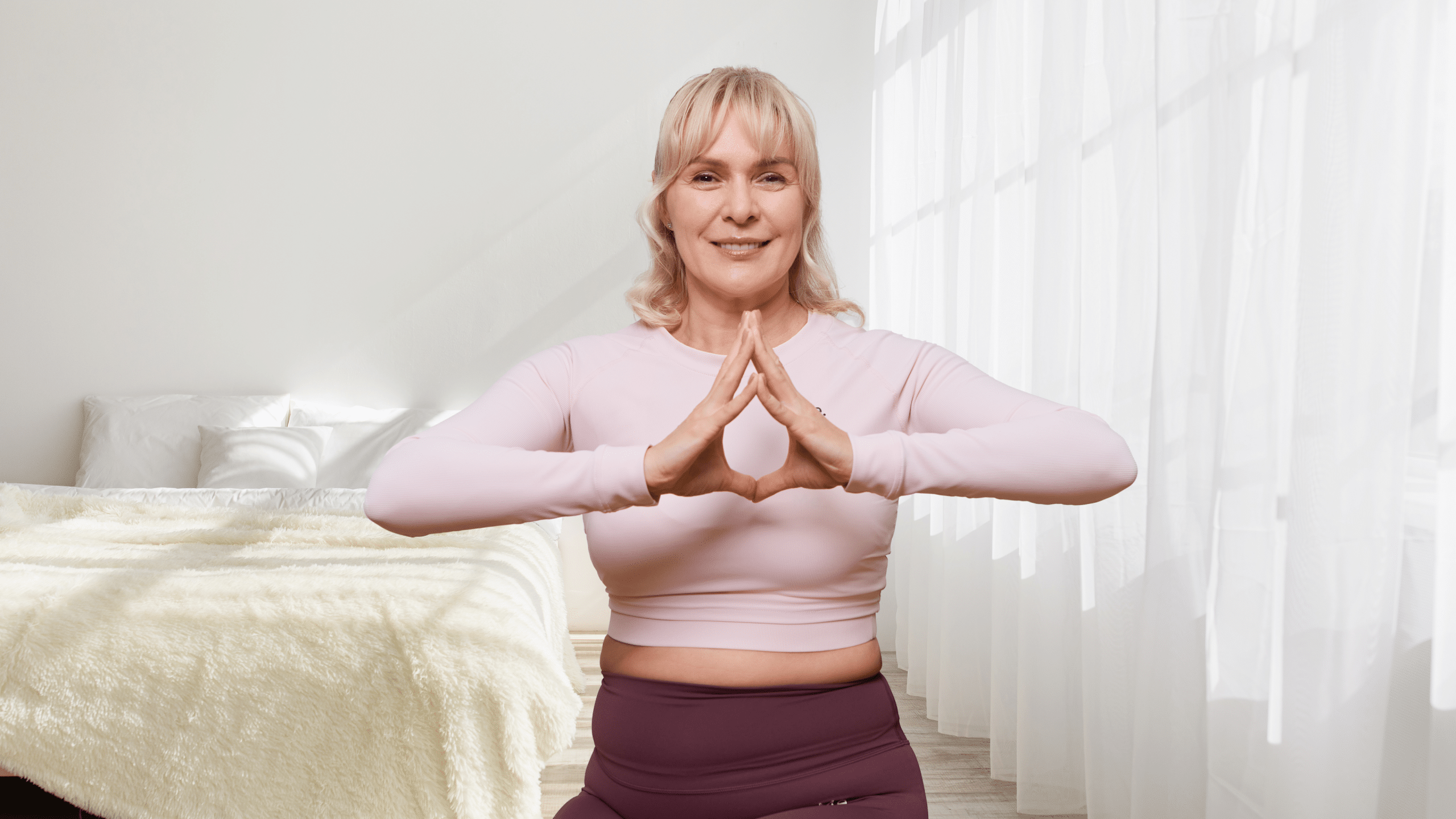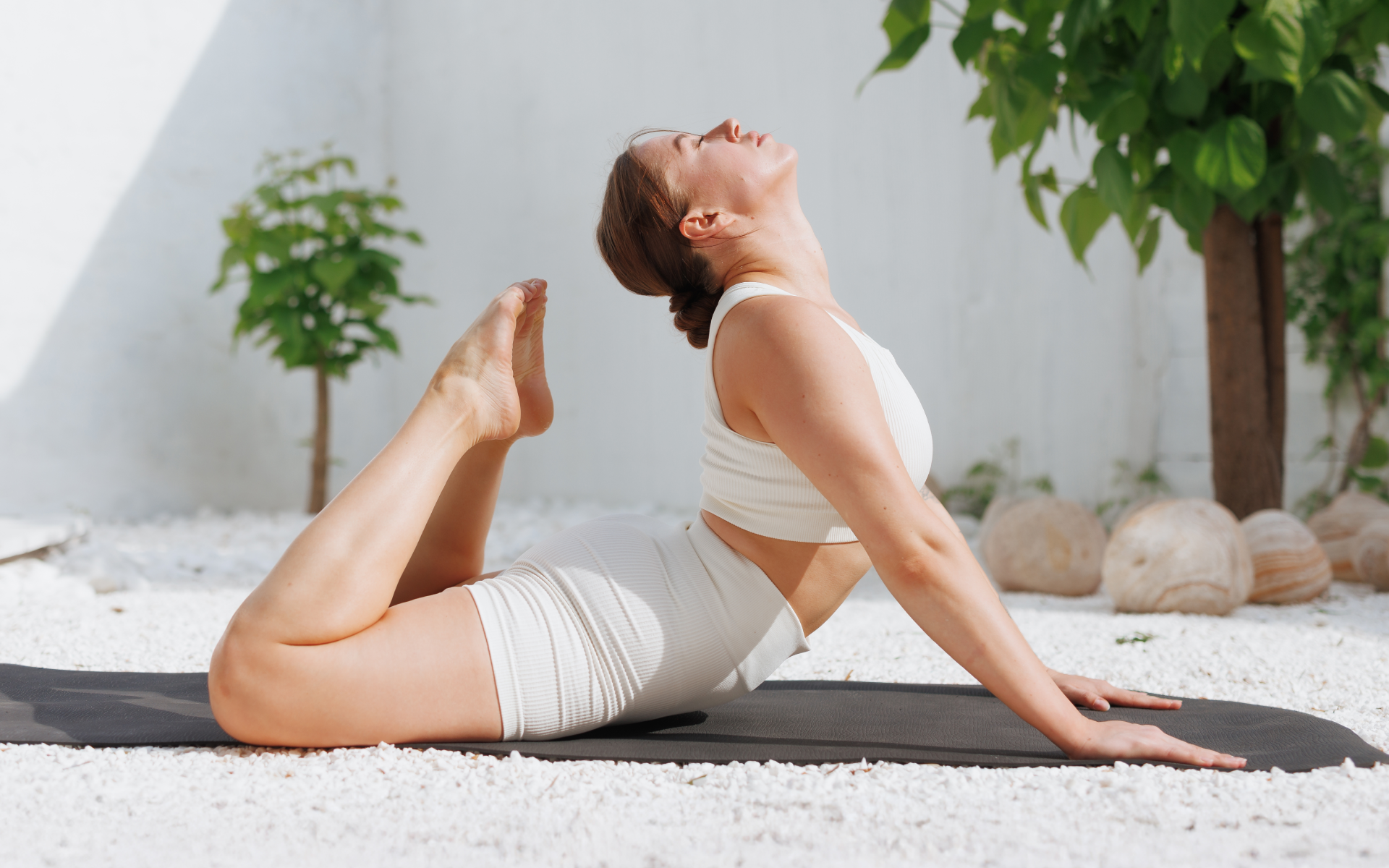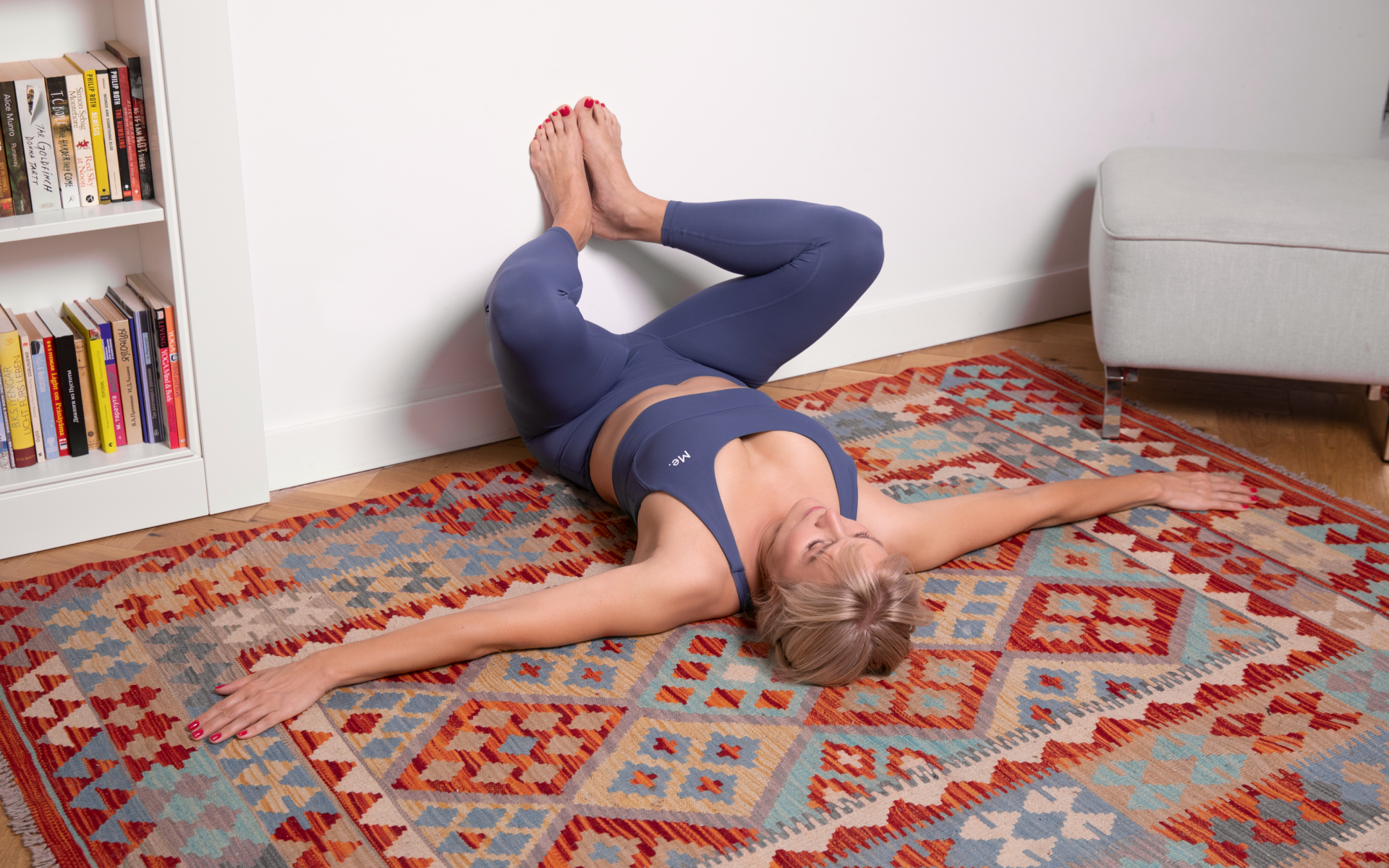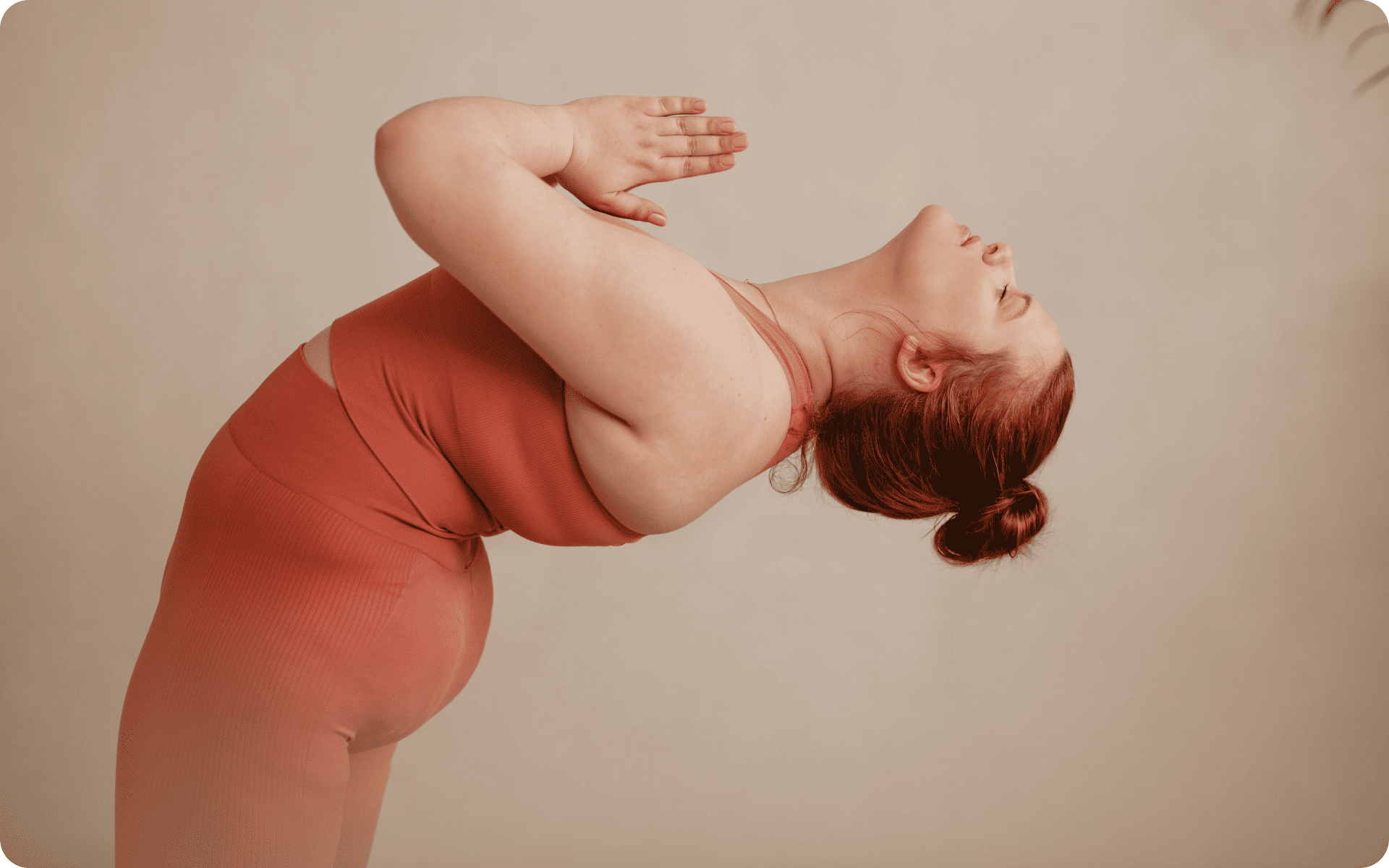Introduction
The thing about Ashtanga Vinyasa Yoga is it’s not just a physical exercise, it’s a dynamic, structured practice that’s designed to nourish both the mind and body. This yoga style is known for its ability to improve strength, flexibility, and mental clarity through a systematic sequence of postures that are synchronized with breath.
With its roots deeply embedded in ancient yogic traditions, Ashtanga Vinyasa yoga has evolved into a well-defined approach that welcomes practitioners of every age and fitness level. In this article, we’ll take you on a journey through the essence of Ashtanga Vinyasa yoga into its origins, philosophies, techniques, and the transformative benefits it offers when adopted into daily life.
Understanding Ashtanga Vinyasa Yoga
What Is Ashtanga Vinyasa Yoga?
Ashtanga Vinyasa yoga is a practice that marries breath with movement in a flowing sequence of postures. This synchronization generates internal heat, which is said to purify your muscles and organs, thereby promoting overall well-being (1).
The name “Ashtanga” comes from the Sanskrit words “Ashta” (meaning eight) and “Anga” (meaning limbs), referencing the eightfold path outlined by the sage Patanjali in the Yoga Sutras (2). These eight limbs provide a comprehensive guide to living a life filled with purpose and meaning, which makes Ashtanga Vinyasa yoga more than a physical practice.
- Historical Background: The modern form of Ashtanga Vinyasa yoga was systematized in the 20th century by the influential teacher T. Krishnamacharya, and further developed and popularized by his student K. Pattabhi Jois. Jois played a crucial role in bringing Ashtanga Vinyasa yoga to a global audience, where it is now practiced by millions worldwide (3).
- The Structure: The practice is divided into six series, each of which is more advanced than the last. Practitioners typically begin with the primary series, which serves as the foundation, before they move on to the intermediate and advanced series. Each series is designed to prepare the body and mind for the challenges of the next. Such a structure helps create a path for growth and development.
The Philosophy Behind Ashtanga Vinyasa Yoga
The philosophy of Ashtanga Vinyasa yoga is deeply intertwined with the teachings of Patanjali’s Yoga Sutras (4, 5). These ancient texts emphasize the eight limbs of yoga, which offer a holistic path to self-realization. These limbs are:
- Yama (Ethical Restraints): These are the guiding principles for how we interact with the world around us, such as practicing non-violence (Ahimsa) and truthfulness (Satya).
- Niyama (Personal Observances): These are practices that cultivate inner discipline and self-care, such as cleanliness (Saucha) and contentment (Santosha).
- Asana (Posture): This refers to the physical postures that make up the yoga practice, which are designed to strengthen and purify the body.
- Pranayama (Breath Control): Techniques for controlling the breath to regulate the flow of energy (Prana) in the body.
- Pratyahara (Withdrawal of the Senses): This step involves turning inward by detaching from external stimuli and focusing on the inner self.
- Dharana (Concentration): Cultivating the ability to focus the mind on a single point or task.
- Dhyana (Meditation): A state of deep meditation where the mind is fully absorbed in the present moment.
- Samadhi (State of Union): This is the ultimate goal of yoga, in which the practitioner experiences a profound sense of oneness with the universe.
In Ashtanga Vinyasa yoga, these limbs are not separate steps and are integrated into the practice itself. The physical postures (Asana), breath control (Pranayama), and focused gaze (Drishti) are all essential parts that help create a meditative flow. This combination strengthens the body and calms the mind, which makes Ashtanga Vinyasa yoga a holistic practice that addresses and nurtures every aspect of life.
Reasons why BetterMe is a safe bet: a wide range of calorie-blasting workouts, finger-licking recipes, 24/7 support, challenges that’ll keep you on your best game, and that just scratches the surface! Start using our app and watch the magic happen.
Key Elements and Practices
Ashtanga Vinyasa yoga is distinguished by the Tristhana method i.e. three places of attention. These three fundamental elements are (4, 5):
- Breath (Ujjayi Pranayama): The foremost is a specific breathing technique that creates a rhythmic, calming sound in the throat. This controlled breath is used throughout the practice to maintain focus, regulate energy, and generate internal heat.
- Posture (Asana): The physical poses of Ashtanga Vinyasa yoga are linked in a specific sequence that flows smoothly from one to the next. Each pose is designed to build strength, flexibility, and balance, all while promoting detoxification and internal purification (6).
- Gaze (Drishti): Each posture is associated with a particular gaze point, which helps to direct the practitioner’s focus inward. This practice helps cultivate concentration and meditative awareness.
The Sequence of Practice:
- The practice traditionally starts with Surya Namaskar (sun salutations), a sequence of movements that warms up the body and prepares it for the more challenging postures that follow (1).
- Following the warm-up, practitioners move through a series of standing postures that develop strength, balance, and grounding.
- The practice then transitions to seated postures that focus on flexibility, forward bends, and twists, which encourage deep internal work.
- Finally, the practice concludes with a finishing sequence that includes backbends, inversions, and a period of rest in Savasana (corpse pose). This allows the body and mind to absorb all the benefits of the practice.
Benefits of Ashtanga Vinyasa Yoga
Physical Benefits
When it comes to this specific type of yoga, there’s an extensive range of physical benefits that you can reap. Therefore, it’s a highly effective practice for improving overall health and fitness. Some of the key benefits include (7):
- Strength Building: The practice strengthens the entire body, with a particular emphasis on the core, arms, and legs. The challenging postures, combined with the flowing movements, create a balanced workout that builds both muscle strength and endurance.
- Flexibility Improvement: Regular practice of Ashtanga Vinyasa yoga significantly improves flexibility. The repeated stretching and lengthening of muscles during the sequences help to increase the range of motion and prevent stiffness.
- Cardiovascular Health: The continuous flow of postures raises the heart rate, providing a cardiovascular workout that improves heart health and boosts the metabolism (8).
- Detoxification: The internal heat generated by the practice, combined with deep, controlled breathing, promotes sweating, which helps detoxify the body by eliminating toxins through the skin (9).
- Posture and Balance: Ashtanga Vinyasa yoga emphasizes proper alignment in each pose, which helps to improve posture and balance. This focus on alignment also reduces the risk of injury, which makes the practice safe and sustainable in the long term.
Mental and Emotional Benefits
Even in terms of mental and emotional benefits, Ashtanga Vinyasa yoga scores highly in these departments. It offers practitioners a path to greater mental clarity, emotional stability, and overall well-being. The benefits include:
- Stress Reduction: The practice’s emphasis on breath control and concentration helps to calm the nervous system, reducing stress and anxiety. Studies have shown that regular yoga practice can lower cortisol levels, the hormone that is associated with stress (10).
- Mental Clarity: The repetitive nature of Ashtanga Vinyasa yoga allows the mind to become more focused and less distracted. This heightened state of concentration paves the way for mental clarity and improves problem-solving abilities (11).
- Emotional Stability: As the mind becomes more focused and less reactive, practitioners often experience greater emotional stability. This can lead to improved relationships, better decision-making, and generally, a more positive outlook on life.
- Self-Awareness: The meditative aspects of the practice encourage self-reflection and introspection, helping practitioners to develop a deeper understanding of themselves and their emotions. Over time, this increased self-awareness can lead to greater self-acceptance and inner peace (12).
Spiritual Benefits
At its heart, Ashtanga Vinyasa yoga is a spiritual practice that aims to unite the body, mind, and spirit. The discipline required to maintain a consistent practice encourages people to explore their inner world and develop a deeper connection to their true self. The spiritual benefits of Ashtanga Vinyasa yoga include (7):
- Mindfulness and Presence: The focus on breath, movement, and gaze helps practitioners stay present in the moment. This helps to build mindfulness in the practice and in your daily life.
- Connection to a Higher Purpose: As you progress through the series, you may experience moments of stillness and clarity, often described as moments of spiritual insight or awakening. These experiences can truly be deeply transformative and help individuals live more authentically and with greater purpose.
- Inner Peace: The meditative flow of Ashtanga Vinyasa yoga creates a sense of inner calm and peace that extends beyond the mat, which allows practitioners to navigate life’s challenges with greater ease and resilience.
Read more: Japanese Yoga: A Deep Dive Into Mindful Movements
How to Practice Ashtanga Vinyasa Yoga
Getting Started
Starting a practice of Ashtanga Vinyasa yoga can be both exciting and challenging. For beginners, it’s important to start with the primary series, which is specifically designed to detoxify and align the body. This series includes a variety of postures that work on strength, flexibility, and balance, which makes it an ideal starting point for new practitioners.
Tips for Beginners:
- Master the Basics: Focus on mastering the sequence, understanding proper alignment, and developing the correct breathing technique before you move on to more advanced postures. This foundation will support your progress and prevent any kind of injury.
- Find a Teacher: Practicing under the guidance of an experienced teacher is always recommended, as they can provide necessary adjustments and modifications. This guidance will help you to establish a safe, sustainable, and effective practice.
- Building a Routine: Consistency is one of the top influencers to see progress in Ashtanga Vinyasa yoga. Create a regular practice routine, ideally practicing six days a week with one day of rest. This regularity will also help build discipline and make way for steady improvement.
Techniques and Poses
The Ashtanga Vinyasa yoga practice follows a specific sequence, starting with Surya Namaskar A and B (sun salutations) (1). These sequences serve as a warm-up, preparing the body for the more challenging postures that follow.
- Primary Series (Yoga Chikitsa): The primary series is designed to detoxify and align the body through a series of standing, seated, and finishing postures. Each pose in the series is linked with a specific breath pattern, and transitions between poses are performed with precision and control.
- Key Poses: Some of the key poses in the Primary Series include Trikonasana (triangle pose), Paschimottanasana (seated forward bend), and Marichyasana (Marichi’s pose). These poses are designed to build strength, increase flexibility, and improve focus.
Tools and Props
While Ashtanga Vinyasa yoga does not traditionally require the use of props, they can be incorporated into the practice too. This is done to benefit beginners and those with limited flexibility. Props such as blocks, straps, and blankets can help practitioners achieve proper alignment and deepen their practice.
Some of the benefits of using props include:
- Props make the practice more accessible, which allows practitioners to modify poses to suit their individual needs and limitations.
- Using props can help reduce the risk of injury by supporting proper alignment and preventing strain on the muscles and joints.
- Props can assist in deepening the practice by enabling practitioners to hold poses for longer periods and explore the full range of motion in each posture.
Integrating Ashtanga Vinyasa Yoga into Daily Life
Creating a Routine
The deciding factor for seeing results with Ashtanga Vinyasa yoga is consistency. Practicing 6 days a week with one rest day is recommended for the best outcome. Morning practice, ideally on an empty stomach, is often encouraged as it helps to set a positive tone for the day (13). Over time, this regular practice not only builds physical strength and flexibility but also makes you more disciplined and mentally focused.
Tips for Creating a Routine:
Here’s a checklist for you to start your routine:
- Designate a Practice Space: Creating a dedicated space for your yoga practice always helps to reinforce your routine. Choose a quiet, comfortable area free from distractions and equip it with your choice of props.
- Set Realistic Goals: Establish small, achievable goals for your practice, such as mastering a specific posture or increasing the duration of your practice. Keep track of your progress, so you can keep yourself motivated.
- Listen to Your Body: It’s important to listen to your body and adjust your practice as needed. Some days, you may need to take it easy, while other days, you may feel ready to push yourself further. Understand and honor your body’s signals and practice mindfulness.
Combining with Other Activities
Ashtanga Vinyasa yoga can be effectively combined with other physical activities to create a balanced fitness regimen. Activities such as swimming, running, or weight training can complement yoga by building cardiovascular endurance and muscle strength. However, it’s important to listen to your body and avoid overexertion.
Complementary Activities:
- Restorative Practices: On rest days, doing restorative activities such as gentle stretching, meditation, or Yin yoga can help rejuvenate the body and mind. It also makes sure that you can return to your Ashtanga practice refreshed and ready to move forward.
- Cross-Training: Incorporating activities such as swimming or running can enhance cardiovascular health and build endurance. Therefore, it ends up complementing the physical benefits of Ashtanga Vinyasa yoga has to offer (14).
- Mind-Body Practices: Practices such as tai chi or qigong can be integrated into your routine to promote relaxation and mindfulness (15). This helps balance the dynamic nature of Ashtanga with gentler, more meditative practices.
BetterMe will shake off your mental funk, rid you of your energy-zapping habits, and help you sculpt the body of your dreams. Intrigued? Hurry up and change your life for the better!
Practical Examples and Guides
Sample Sequences
A typical Ashtanga Vinyasa yoga session starts with Surya Namaskar to warm up the body, followed by a sequence of standing and seated postures. For beginners, it’s best to start with a modified version of the primary series and gradually work up to the full sequence as strength and flexibility improve.
Advanced Practice
As practitioners become more advanced, they may start to explore the intermediate and advanced series, which include more challenging postures such as deep backbends, arm balances, and inversions. However, it’s important to master the primary series before progressing to these more advanced levels.
Meditation and Breathing Techniques
Pranayama, or breath control, is one of the most important parts of Ashtanga Vinyasa yoga. Ujjayi breathing is defined as a slow and controlled form of breathing that creates a gentle sound in the throat. It’s used throughout the practice to maintain focus and control. This type of breathing helps to regulate the flow of energy in the body, keeping the mind calm and centered (1).
Incorporating Meditation
- In addition to Pranayama, adding a short meditation practice before or after your yoga session can really improve the mental and spiritual benefits of the practice. Meditation helps quiet the mind, reduce stress, and deepen your connection to the present moment.
Using Props and Modifications
As previously mentioned, props can be used to modify poses and make them more accessible. For example, in forward bends, a block can be placed under the hands to reduce strain on the hamstrings.
- Tailoring the Practice: Modifications allow practitioners of every level to participate in the practice safely and effectively. For those with physical limitations or injuries, modifications can be particularly important.
For example, practitioners with tight hamstrings may need to bend their knees in forward bends, and those with shoulder injuries may need to avoid certain arm balances. An experienced teacher can help to identify appropriate modifications to ensure that the practice continues to remain safe and effective.
Read more: Yoga for Moms Who Need a Break: A Simple Guide
Overcoming Challenges in Ashtanga Vinyasa Yoga
Staying Motivated
Continuing to remain motivated can be challenging, particularly for beginners. Setting small, achievable goals and tracking your progress will help in sustaining your interest and commitment.
It’s also helpful to practice in a supportive community or under the guidance of an experienced teacher. Joining a class or finding a practice group can be the extra factor that adds encouragement and accountability to your routine.
Hacks to Keep Yourself Motivated
- Surround yourself with a supportive community, whether in person or online. Sharing your experiences with others can provide valuable validation and motivation.
- Keep your practice interesting by gradually introducing new postures or variations as you progress. This sense of challenge and growth is likely to keep your practice fresh and exciting.
Dealing with Physical Limitations
Physical limitations, such as injuries or chronic conditions, can make certain postures difficult. In these moments, you should listen to your body and avoid pushing it into pain by overworking it. Modifying postures or skipping certain sequences altogether can help prevent injury and ensure a more sustainable practice.
How can you deal with physical limitations? We have a few tips and suggestions.
- Consult with Professionals: Before you start a yoga practice, particularly if you have existing health conditions, you should consult a healthcare provider and seek guidance from an experienced yoga teacher.
- Be Patient: Progress in yoga can be slow and gradual. Be patient with yourself and remember that yoga is a lifelong journey. Instead of being sad about what you cannot yet achieve, try to focus on how far you’ve actually come.
Managing Time and Commitment
Balancing a regular yoga practice with other regular life commitments can be difficult. Allocating a specific time each day for practice, even if it’s just 20 minutes, can help integrate yoga into a busy schedule.
Time Management Tips
- Short Sessions: If you have a particularly busy schedule, consider breaking your practice into shorter sessions. For example, you may practice a short sequence in the morning and another in the evening. Such a routine-approved approach can help you stay committed without feeling overwhelmed.
- Prioritization: Treat your practice as an essential part of your day, similar to eating or sleeping. By making yoga a priority, you’ll be more likely to find the time and energy to practice regularly.
FAQs
What’s the best way to start practicing Ashtanga Vinyasa yoga?
The most effective and easy method to learn Ashtanga Vinyasa yoga is through this primary series, under the supervision of a trained instructor. Learn the fundamentals of postures, breath work, and flow before diving into the more advanced practices.
Can anyone practice Ashtanga Vinyasa yoga regardless of age or fitness level?
Yes, Ashtanga Vinyasa yoga can be modified to accommodate practitioners of different levels and ages. You can modify and use props to help make the practice accessible, and progress at your own pace.
How does Ashtanga Vinyasa yoga differ from other forms of yoga?
Ashtanga Vinyasa yoga is unique for its series of poses, and its focus on breath and movement synchronization. Unlike most other forms of yoga, it follows a certain sequence for the postures—basically, you do the same series and in an identical order each time.
What should I expect from an Ashtanga Vinyasa yoga session?
An Ashtanga Vinyasa yoga class is usually a vigorous, demanding practice that involves a continuous flow of postures linked by breath. Get ready to sweat, get toned, and become more flexible, in addition to improving your mental clarity and calmness.
How often should I practice Ashtanga Vinyasa yoga?
It’s advisable to perform Ashtanga Vinyasa yoga six days per week with one rest day to see the best results. It takes consistent practice to master the sequences and experience all the benefits the practice has to offer.
The Bottom Line
Ashtanga Vinyasa yoga isn’t just a series of exercises, it’s a wholesome routine that improves almost every part of your mind, body, and soul. By synchronizing your movement and breath, it can transform your connection with yourself, in addition to with the divine. From more mindfulness to better cardiovascular health, this practice isn’t just beneficial, it’s accessible to all ages, genders, and fitness levels. Try a class today and watch your life change!
DISCLAIMER:
This article is intended for general informational purposes only and does not serve to address individual circumstances. It is not a substitute for professional advice or help and should not be relied on for making any kind of decision-making. Any action taken as a direct or indirect result of the information in this article is entirely at your own risk and is your sole responsibility.
BetterMe, its content staff, and its medical advisors accept no responsibility for inaccuracies, errors, misstatements, inconsistencies, or omissions and specifically disclaim any liability, loss or risk, personal, professional or otherwise, which may be incurred as a consequence, directly or indirectly, of the use and/or application of any content.
You should always seek the advice of your physician or other qualified health provider with any questions you may have regarding a medical condition or your specific situation. Never disregard professional medical advice or delay seeking it because of BetterMe content. If you suspect or think you may have a medical emergency, call your doctor.
SOURCES:
- Ashtanga Yoga (2000, terebuss.hu)
- The 8 Limbs of Yoga and Why They Matter to Your Practice (n.d., srisrischoolofyoga.org)
- History of Ashtanga Vinyasa Yoga – Finding the Mysore Roots (n.d., samyakyoga.org)
- Ashtanga Yoga: A Brief History and Overview (2014, nirvtra.com)
- Ashtanga yoga: Modern day practice and its physiological & psychological impact (2022, allresearchjournal.com)
- Exploring the therapeutic effects of yoga and its ability to increase quality of life (2011, ncbi.nlm.nih.gov)
- Yoga’s Contribution To Global Health (2024, ijcrt.org)
- The effectiveness of yoga in modifying risk factors for cardiovascular disease and metabolic syndrome (2014, ncbi.nlm.nih.gov)
- Scientific Approaches Of Yoga (2019, mis.alagappauniversity.ac.in)
- Ashtanga Yoga for Psychological Well-being: Initial Effectiveness Study (2017, researchgate.net)
- Real-World fNIRS Brain Activity Measurements during Ashtanga Vinyasa Yoga (2021, ncbi.nlm.nih.gov)
- More than a feeling: Perceptions of wellbeing in regular Ashtanga Yoga practitioners (2022, internationaljournalofwellbeing.org)
- Effects of Yoga Asana Practice Approach on Types of Benefits Experienced (2019, ncbi.nlm.nih.gov)
- 5 Reasons to Cross Train with Yoga (n.d., americansportandfitness.com)
- Qigong: What You Need To Know (2022, nccih.nih.gov)


